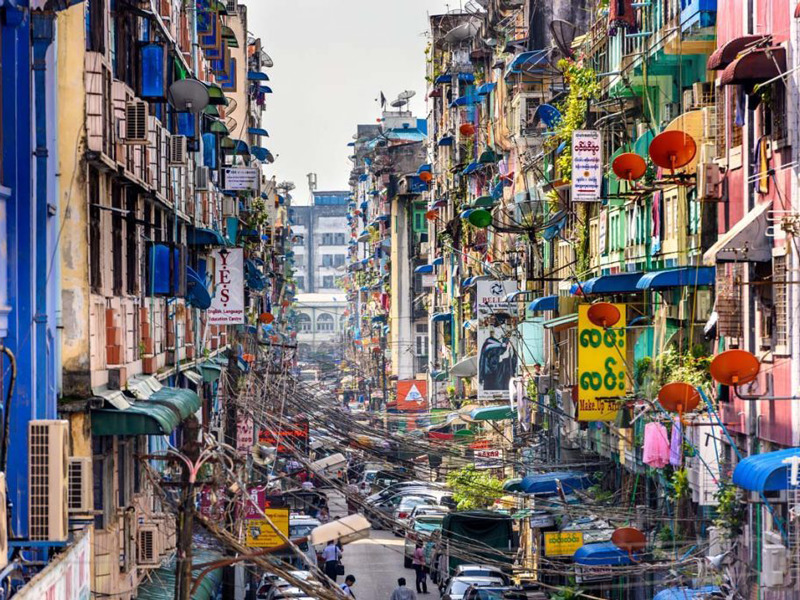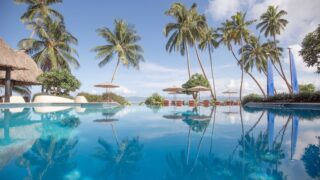Myanmar’s former capital and still its largest city, Yangon is a place of chaotic contrasts. Vendors serve street food on plastic tables outside moss-covered, century-old colonial buildings, cicadas hum in lush-green parks and locals attired in traditional silk skirts (longyi) walk with mobile phones glued to their ears – even inside the golden Shwedagon Pagoda. Rain or shine, it’s a place that grows on you. Here’s how to fill your day if you’re en route to Bagan and its amazing plain of temples, or if you just fancy a weekend getaway.
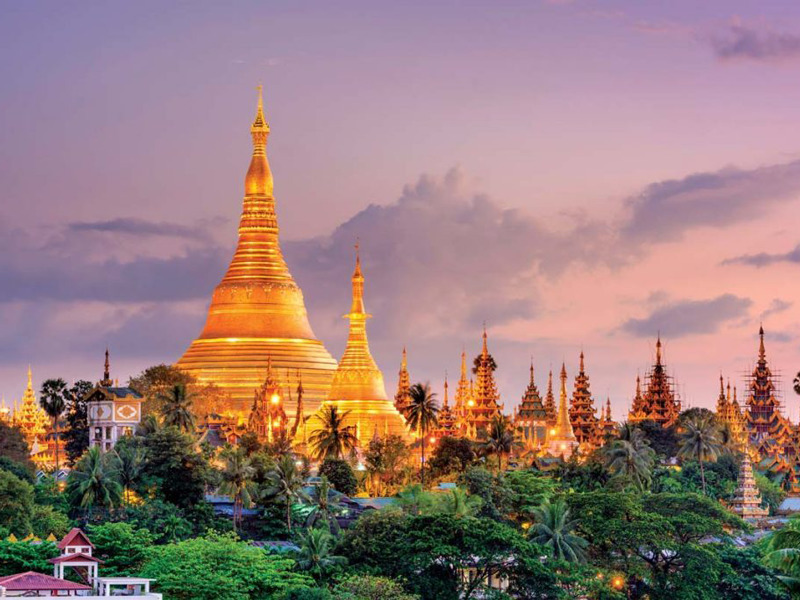
Day One
Morning
Wake up in a super-comfortable bed in the Shangri-La (223 Sule Pagoda Road) and look out over the city’s low-rise colonial skyline, before enjoying a late and leisurely breakfast of mohinga, Myanmar’s ubiquitous noodle dish; there’s plenty on offer to suit all tastes at the hotel’s Café Sule.
Arrange a driver for the day through the hotel concierge, your first essential stop being the Shwedagon Pagoda. The structure’s golden, jewel-encrusted roof contains a 72-carat diamond and has dominated the skyline, and life in the city, for 2,500 years. Technology has well and truly arrived though, with free Wi-Fi at the site. At the ticket counters, it’s easy to hire a tour guide who will explain the history and customs of the temple. They’ll also be able to calculate which day of the week you were born (Friday, in my case), a helpful piece of information that dictates which “corner” you should stand at to pour water over the Buddha statue there (one cup for every year of your age). Every Burmese knows their day of birth as this is often referenced in their name; surnames are not usual.
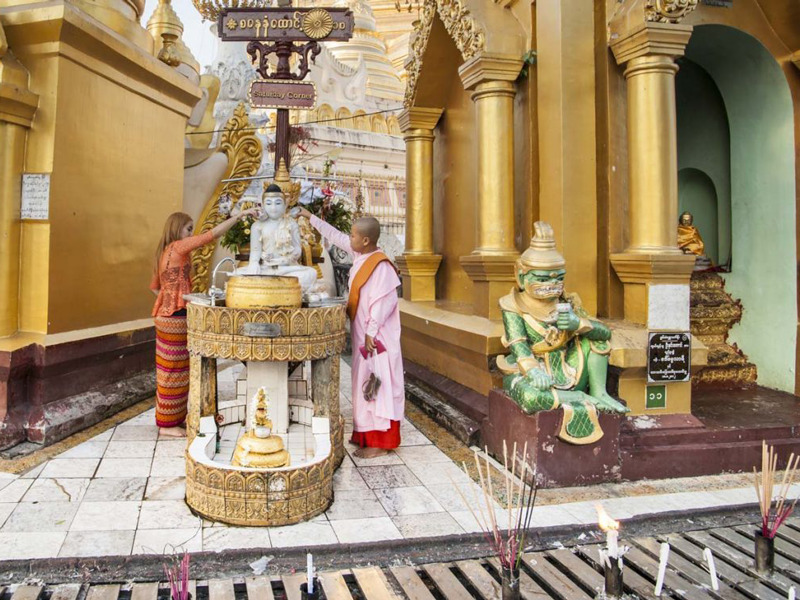
Afternoon
Lunch is a laid back affair of Anglo-Burmese classics eaten on the teak verandah of Belmond Governor’s Residence (35 Taw Win Road), a former colonial mansion complete with geese in the stunning garden. Later, among the art and history exhibits in the National Museum, see the magnificent Royal Lion Throne, which belonged to Myanmar’s last king, Thibaw Min; he was exiled to India after the British annexed Burma in 1886. Afterwards, take a drive around Kandawgyi Lake in the leafy Embassy district, and snap a photograph outside the home of Nobel Peace Prize winner and National League for Democracy leader, Aung San Suu Kyi.
Then head off the beaten track to the Nagar Glass Factory (Hlaing Mahasi Road); shattered by Cyclone Nargis in 2008, it now appeals to treasure-hunters seeking one-of-a-kind souvenirs – but don’t forget your insect repellent, as the mosquitos can be vicious. Another highlight is the Thiri Mingalar Market, Yangon’s authentic wholesale fruit, flower and vegetable market – where tourists are definitely a novelty. A more sedate alternative might be to visit the city’s 72-metre reclining Buddha (Shwegondine Road).
Evening
– the cocktail menu is courtesy of Singapore bar 28 Hong Kong Street – and stick around for their yakitori. Or, for a local dinner, choose from the many barbecue stalls and restaurants along popular19th Street. Back at the ShangriLa, enjoy a nightcap at the Gallery Bar.
3 Walking Tour Options
- Free Yangon Walks: every Wednesday and Sunday at 4pm.
- Yangon Heritage Trust: check the website to book.
- Private guides – ask the concierge at the Shangri-La for assistance in hiring a guide
Day Two
Morning
At times, the city feels like it’s packed to the proverbial rafters: people jostle for space on crowded footpaths to sell their wares, cars block streets (motorbikes are banned) and touts lean out of buses calling their route. This chaos is overlaid with a sense of composure, though, as locals go about their business stoically, men and women alike dressed conservatively in simple shirts and traditional longyi. You can buy your own longyi at the historic Bogyoke Market (built in 1926, and sometimes called Scott Market), where you’ll also find handicrafts from all over the country, fashion, jade and more.
On the second floor is Yoyamay (Room 20), which stocks beautiful ethnic textiles, many from the hill tribes. Also, check out the art stalls –Myanmar has a burgeoning art scene, and you can see more artworks in other established galleries across the city such as Pansodan Cafe Gallery (286 Pansodan Road).
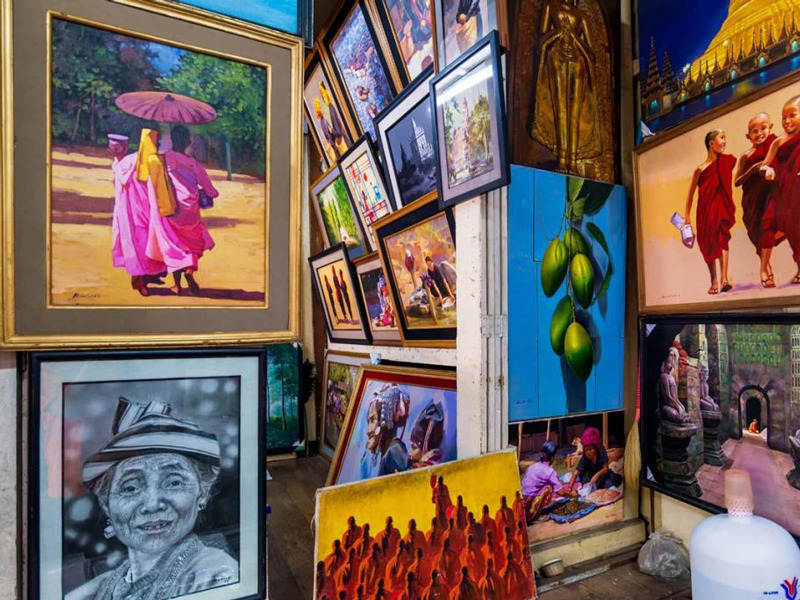
Afternoon
Take a breather at Rangoon Tea House (77-79 Pansodan Road), where authentic local food is served in retro surrounds, and everything on the menu, from the samosa salad and the traditional tea-leaf salad to the curry and the biryani, is great washed down with a local draft beer. Call into HLA Day just across the corridor, a social enterprise that sells gorgeous clothing, handicrafts, homeware and jewellery to support fledgling artisans and businesses. Later, on a walking tour, discover the incredible architectural legacy of Yangon’s past – it’s the largest collection of colonial buildings in Southeast Asia.
While they’re all charming, many have suffered the ravages of time and the harsh climate. Conservation regulations are currently under debate, and at Yangon Heritage Trust (22-24 Pansodan Road) you can see heritage exhibitions or pop in to view the efforts of the Trust’s conservation work at 501 Merchant Street, where a century-old building has undergone restoration. Amid this colonial grandeur, the octagon-shaped Sule Pagoda rises from a roundabout on Sule Pagoda Road. Although smaller than Shwedagon, it’s equally breathtaking.
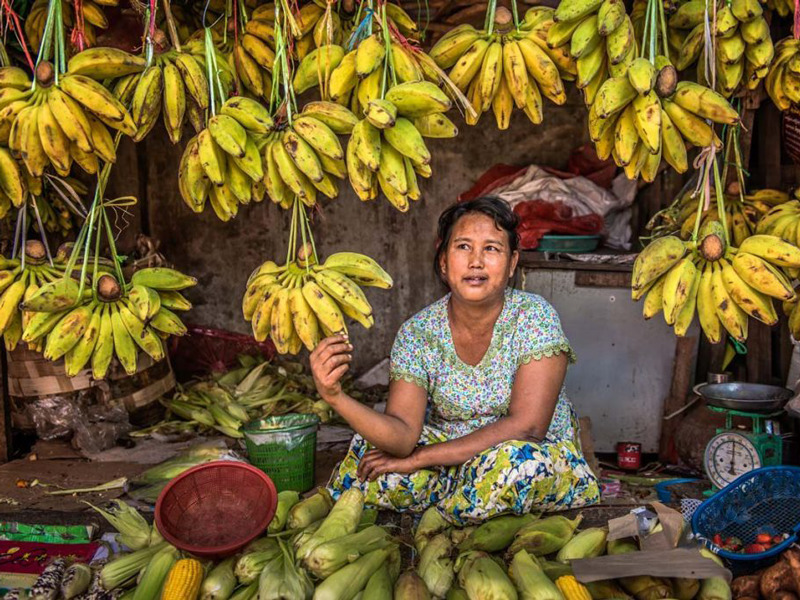
Evening
Head to the airport to catch your flight. If time allows, try a cocktail at the bar at The Strand Yangon (Strand Road), a landmark hotel built in 1901 by the legendary Sarkie brothers who also built Raffles Hotel in Singapore and the Eastern & Oriental Hotel in Penang. It’s due to reopen in November after extensive renovations.
Make it happen!
Apply for a visa online (US$50) to avoid a trip to the Embassy. The months from November to February are coolest and driest, but also the most popular with tourists. We travelled in July and encountered intermittent tropical showers and patches of clear weather.
Subscribe to Expat Living magazine now so you never miss an issue!
Looking for more travel options? Discover new destinations in our Travel section.

